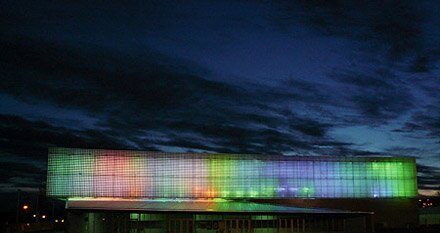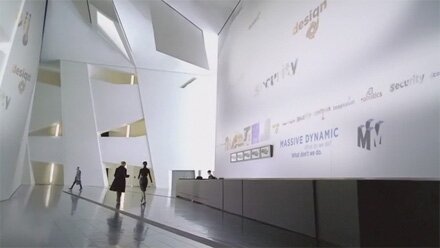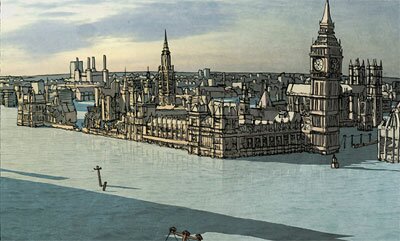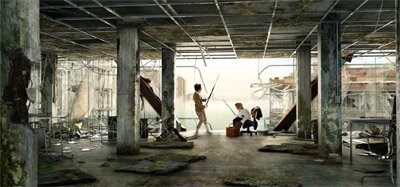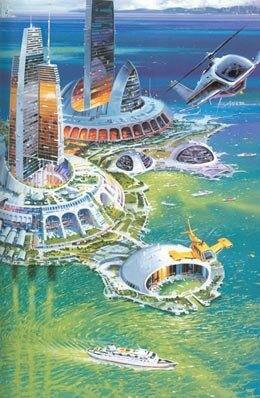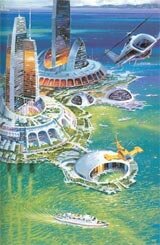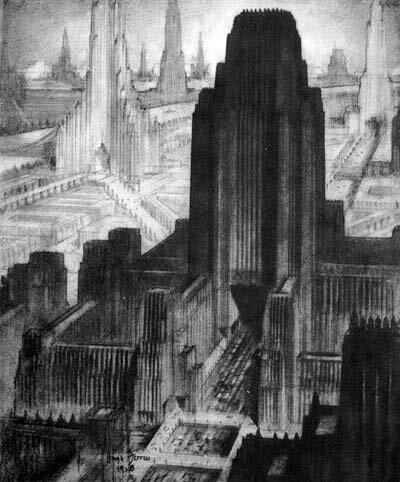
Visions of future New York, conceived in the early twentieth century by artists & architects from Hugh Ferriss and Raymond Hood to Harvey Wiley Corbett are now on display at the Skyscraper Museum in lower Manhattan.
Press Release
New York Modern is the first in a cycle of three related exhibitions, spanning a year, entitled FUTURE CITY: 20 | 21 that will juxtapose a retrospective of American visions of the skyscraper city of the future from the early 20th century with an exploration of Chinese cities today, pursuing the parallel conditions of rapid modernization and urbanization. The second exhibition of the cycle will focus on Hong Kong and New York, and the third, “China Prophecy,” explores 21st-century skyscraper city of Shanghai.
New York Modern, which opens on October 24 and runs through March 2008, looks back at prophecies of the skyscraper city in the early 20th century when the first dreams of a fantastic vertical metropolis took shape. From the invention of the tall office building and high-rise hotels in the late 19th century, New York began to expand upward, and by 1900, the idea of unbridled growth and inevitably increasing congestion was lampooned in cartoons in the popular press and critiqued by prominent architects and urban reformers.
In the 1920s, though, a new vision of the future swept American culture-a monumental city of towers, multilevel highways, aerial transport, and densely developed commercial districts. Principally the projections of New York architects and planners, this new type of hyper-concentrated urbanism was set forth in dazzling images, not only in professional circles and publications, but in newspapers, books, magazines, art galleries, department stores, and movies.
Continue reading ‘Future City: 20|21 - New York Modern Exhibition’
